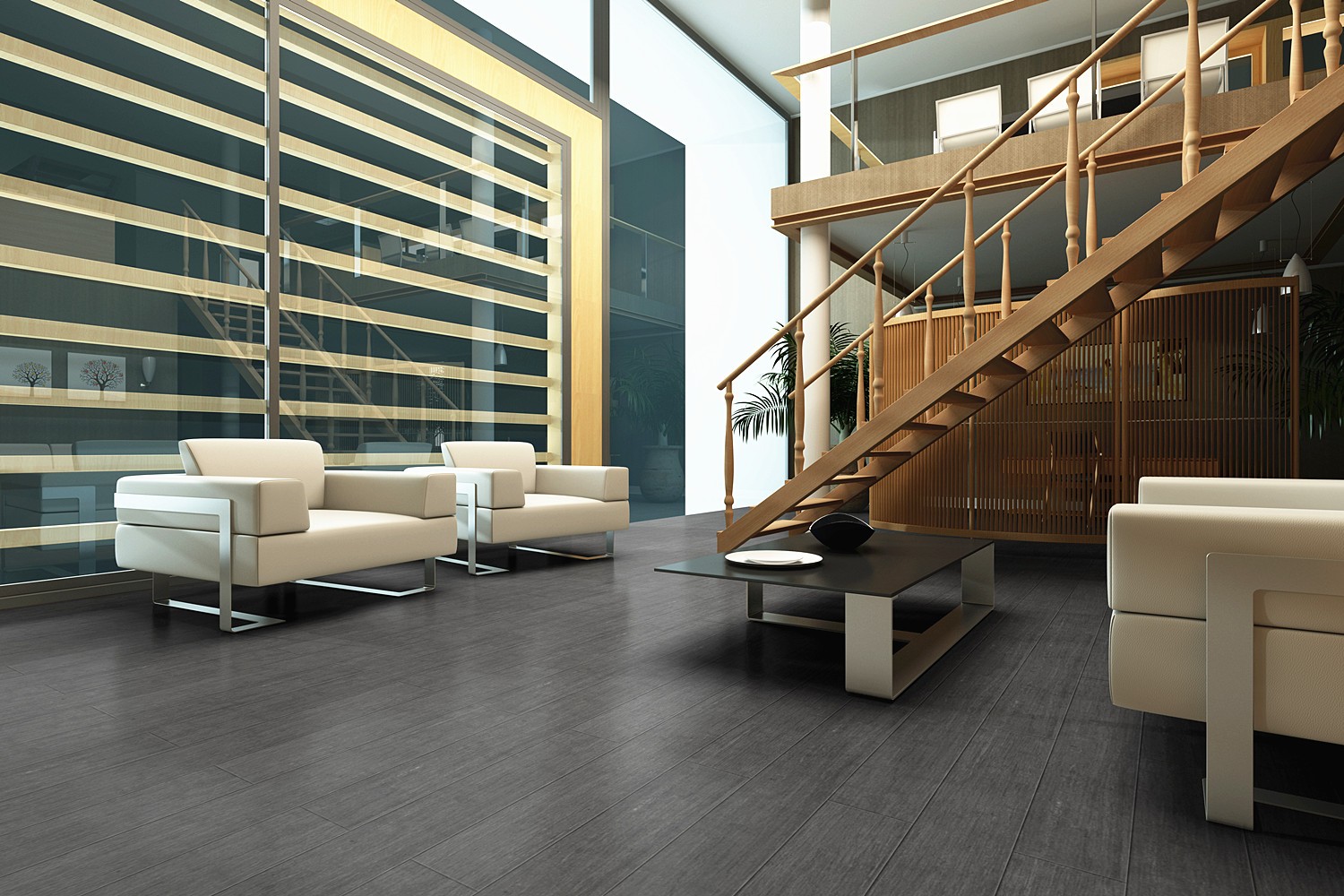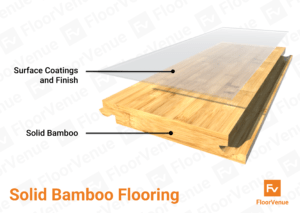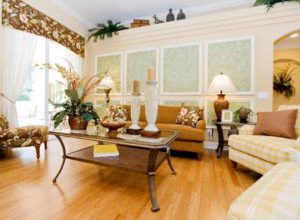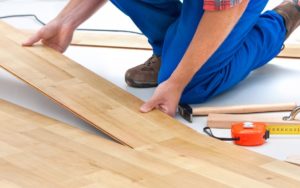

22 Dec Ultimate Guide to Bamboo Flooring Sydney & NSW
Bamboo flooring is considered one of the more luxurious kinds of flooring, and for good reason. While it isn’t the same as hardwood timber flooring, it shares many of the same qualities and attributes. This ultimate bamboo flooring guide will provide you with a comprehensive breakdown of everything that bamboo flooring can offer your home.
What is Bamboo and Bamboo Flooring?
For those who don’t know, bamboo isn’t actually a type of wood, but rather a species of giant grass. While the idea of grass flooring doesn’t sound as logical as wood flooring or hardwood floors, the resulting product of bamboo flooring can be absolutely gorgeous when done right.
Bamboo flooring is manufactured from hot-pressing bamboo grass fibres with extreme temperature, pressure and resins to create a very dense and robust plank made from natural materials. Modern bamboo flooring comes in a strand woven form, which means the fibres come in alternating directions to make the product more stable under moisture or temperature changes.


Advantages of Bamboo Flooring
Bamboo is a kind of grass, albeit a tall one, whereas real timber is sourced from plantation forests. Lets explore the advantages bamboo flooring has over other hard floors.
1) Environmental Sustainability
The biggest difference is that hardwood takes much longer to grow – often upwards from 40 years to reach maturity, whereas bamboo reaches harvesting maturity quite in 4 – 7 years.
Another cool aspect of bamboo stalks is that unlike trees, they continue to grow even if they are cut. This means that a single bamboo stalk will replenish itself even if half of its length is cut off. Bamboo is a very renewable resource and certainly a great option when going green.
2) High Janka Rating & Durability
Strand woven solid bamboo flooring is known for it’s incredibly high janka rating, which is a measurement for how scratch and dent-resistant natural timber is. Reaching 14 – 16 kN in Janka rating, strand woven bamboo flooring outclasses all European oak flooring options (6 – 9 kN) as well as Australian timbers (7 – 12 kN). In fact, strand woven bamboo flooring is almost three times tougher than the strongest hardwood flooring.
3) Exotic Grain Pattern
Another key difference between the two is the natural beauty of bamboo flooring. It is very easy to tell the difference between a bamboo floor and hardwood floors even with the naked eye. The horizonal patterns in the bamboo also have a more uniform texture making it easier to identify them, no matter where they come from.
Natural bamboo flooring tends to be light and sandy in colour. There are exceptions to this. Carbonized bamboo is a variant that acquires a darker colour after being exposed to smoke and steam for extended periods of time.
4) Termite Resistant
Another great benefit is that because bamboo isn’t a type of wood, that makes it termite resistant. Should an infestation ever occur in your home, your bamboo floors would be safe and sound.
Disadvantages of Bamboo Flooring
While bamboo flooring sounds like an incredible alternative to hardwood or laminate flooring thus far, there are quite a few cons to keep in mind.
1) Moisture Cupping & Swelling
Bamboo flooring also has less moisture resistance, so spills need to be taken care of in a timely manner. If water is left on bamboo for too long, it will absorb the moisture and often cup or swell upwards. It is important to wipe away water or other liquids immediately.
Additionally, bamboo is sensitive to humidity so it may not be a viable option depending on your location’s climate. Very dry air can cause bamboo floors to crack, whereas very wet or moist air will cause bamboo floors to swell. We have a guide to cleaning and maintaining bamboo flooring.
However, we do have water-resistant bamboo flooring which uses a waterproof core! These are much better against moisture, however will cost more per square metre than ordinary bamboo flooring. We will explore this more later!
2) Cannot Sand & Polish
Although bamboo flooring is a natural material, it’s extremely robust composition becomes a drawback when you want to sand and polish the planks. As the durability can exceed that of the strongest timber species, they are very difficult to sand down and repolish. This reduces the maximum life span of bamboo flooring compared to hardwood timber flooring.


The Different Types of Bamboo Flooring
Not all bamboo floors are the same in quality and performance. There are three main categories that bamboo flooring comes in.
Water-Resistant Engineered Bamboo Flooring (The Best)
This range is also known as HydroPro Bamboo flooring. A surface of real strandwoven bamboo flooring is bonded to a 100% waterproof core, making this variant of bamboo flooring great against moisture, spills and water in general. They are completely immune to warping and swelling, and are very easy to install with it’s patented click system.
You can explore our full range of water-resistant bamboo floors.
Solid Strand Woven Bamboo Flooring (The Tried & Tested)
Stranded or strand woven bamboo flooring is made by turning the bamboo stalks into thin strands via a shredding process. The layers of stands are then compressed together to create a hardened surface that resembles hardwood flooring.
Strand woven bamboo can be made in tongue and groove plank formats or a floating floor plank style, each with its own installation method. New models only come in click lock planks as the material is too dense and hard to nail properly in the tongue and groove format.
Engineered Bamboo Flooring (Runners Up)
Engineered bamboo is a phrase we already covered in the water-resistant range, however these use normal plywood instead of a waterproof composite as the base. This is because plywood-based engineered bamboo flooring is a commonly purchased bamboo floor type thanks to its slightly more affordable price.
Engineered bamboo floors are often a combination of bamboo and plywood or fiber-based core. In other words, it is a sort of mixed bamboo blend that isn’t the same as a pure solid bamboo flooring type. While it is slightly cheaper, it is also less durable as well.
Horizontal & Vertical Bamboo Flooring (Discontinued)
Horizontal and vertical bamboo floors are made by gluing together thin strips to create solid bamboo planks that have a grain pattern. They achieve a Janka rating of only 6.2 kN which means they are much easier to scratch and hence much less popular.
Both horizontal bamboo and vertical bamboo is no longer available in our stores as they simply won’t perform as well as the newer strand woven bamboo options.


The Price of Bamboo Flooring
Despite several key differences between more traditional hardwood flooring and laminate flooring options, the price of bamboo is usually more affordable than many hardwood floors, but cheaper than laminate and hybrid options. There is a large range to take into account, though.
Water-resistant bamboo flooring will cost around $100 – $120 per square metre. These will be by far the most premium and expensive option in bamboo flooring.
Strandwoven bamboo flooring will be as cheap as $80 per square meter, and other times a quality bamboo flooring can go for $100 per square meter. The exact price you’ll pay will ultimately depend on what kind of bamboo flooring you’ll opt for, and where you buy it.
There are cheaper vertical and horizontal bamboo flooring options available, however they won’t perform as well as strandwoven bamboo which is why we no longer sell those options.
As bamboo flooring are floating floors, installation will cost around $30 – $40 per square metre in Sydney NSW, varying depending on the experience and qualifications of your layer.
Fortunately for you, we have a complete cost guide that covers all types of bamboo floors available in the Australian market, including labour fees!
Can I DIY Install Bamboo Flooring?
All bamboo floors come with a click-lock system which means they can be installed without glue or nails. Yes – installing bamboo flooring is a DIY-friendly option. However, you must follow the manufacturer’s installation procedures closely in order to avoid mistakes. We have a beginner’s guide on how to install floating floors like bamboo flooring.
FloorVenue has multiple teams of in-house experts with decades of experience. You can always reach out to us for a free on-site inspection and quote to have your floors installed professionally.


Conclusion – Is Bamboo Flooring Any Good?
Bamboo flooring is great for residential uses where moisture may not be a large concern. Hallways, bedrooms, living areas and sunrooms can definitely benefit from the natural beauty and durability, however kitchens and laundry areas mean more maintenance with water.
At FloorVenue, we have hundreds of bamboo floors to choose from. Discover our most popular bamboo flooring brands and their pros and cons!
We hope you have found our bamboo flooring guide helpful. If you have any other questions about bamboo flooring pros or bamboo flooring cost, feel free to get in touch with FloorVenue at any time. We’ll help you discuss potential bamboo flooring products, bamboo flooring options, the best flooring retailers and more.




























